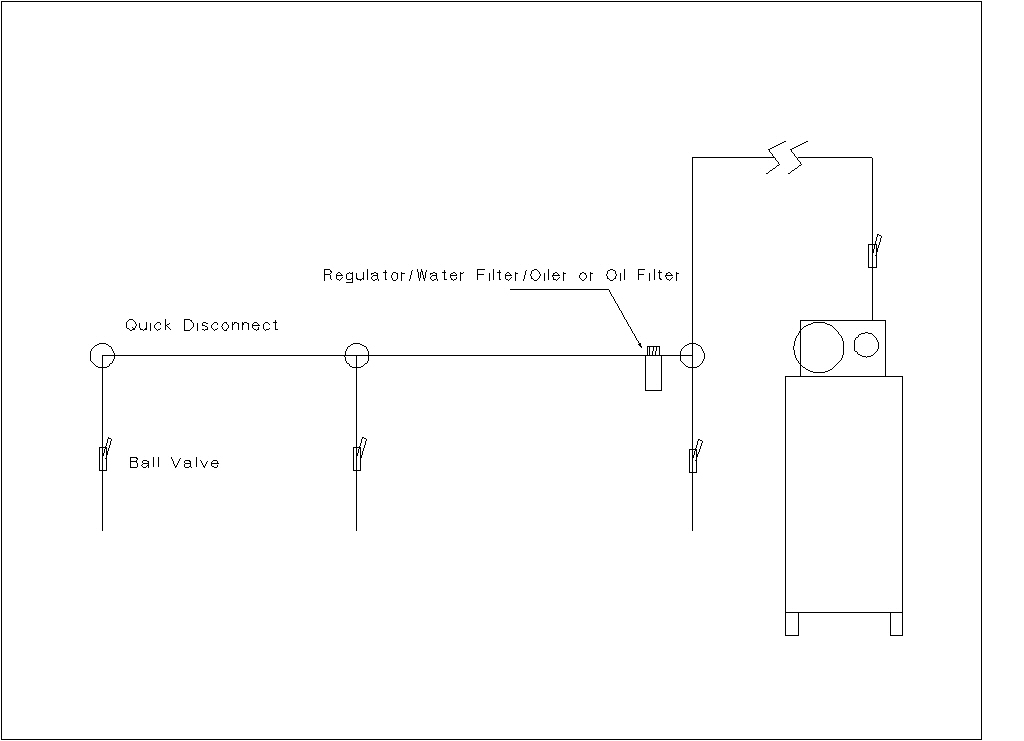We have a Murphy Rodgers MRM14 with a rotary air lock. The machine is outside, and the exhaust blows outside. I would like to route the exhaust in to our shop. To do so, i would need to add three 90 degree elbows to the exhaust ducting. The exhaust outlet is 14" diameter. If I added these elbows will I create any backpressure issues that could diminish the performance of my dust collection system? Should I increase to a larger diameter at the exhaust outlet before adding the elbows?
From contributor Fr
We have 2 Dust Colectors with 17'' Ducts
in and out .Each of them requiert 2 90 Deg. Elbows to get them back into the Shop. Dont have any Problems with less
Sucktion or Backpressure.
Only the noise in the Shop increased.
From contributor Cu
Brian,
When you add the return duct, you will be adding resistance to the blower unit. The 20 HP Murphy pulls air into the dirty chamber, filters it by way of filter bags, and discharges the filtered air out of the rectangular blower discharge. The blower is normally mounted on top of the bag house. Lets say we are pulling 4,200 CFM in the 14" pipe which will be moving at an air velocity of approx 4,000 Feet Per Minute. Once the air is cleaned, we do not have to keep that same velocity which is required to keep the dust and chips entrained in the air stream. If we kept diameter at 14", additional resistance will be as follows. 1, 14" 90 deg elbow with a 1.5X diameter centerline radius is equal to 30' of straight pipe in equivalent resistance. I f you had 10' of straight pipe with the 3, 90's, total equivalent straight would be 100'. This would add 1.6" of additional static pressure the blower would have to overcome. Typically, you would lose 500 CFM on the suction side for every additional inch or so of static pressure. Now, lets say we increase the return duct to 18" diameter. That 4,200 CFM would now be moving at 2,400 FPM. 1,18" 90 degree elbow (1.5XDIAM CL) is equal to 41' of straight pipe in equivalent resistance. 3, elbows and 10' straight pipe would be equal to 133' total straight pipe. Resistance per 100' of 18" diameter with 4,200 CFM would be .45" static pressure WG per 100'. This approach would only add .60" static pressure against the blower. Almost 1/3 of what the 14" pipe would create. The return air noise would be substantially less as well. According to NFPA 664, you may have to install an abort gate if you return air back to building. I would check on this with local Fire Marshall before installing return. I believe, due to this size collector, they may require spark detection as well as abort gate. The abort gate sends the return outside if there is a fire in the bag house.
Curt
From contributor Br
Curt,
Thank you very much for your response. 18" duct makes good sense. Regarding the abort gate and the spark detector, do you know about retrofit costs/complexity? Aside from local code requirements, how effective are the abort gate and spark detector in mitigating fire damage and danger?
Thanks again.
From contributor Cu
Brian,
The units are quite effective. Try Flamex Inc. www.flamexinc.com
They have a lot of info on their web site.
Curt
From contributor Br
Curt,
I read through NFP 664, and it appears as though spark detection and/or abort gates are required in dust collectors with a "fire hazard," which is defined as "ducts conveying dry material... having a frequency of generated sparks..." (section 8.2.2.2.2, page 14, bottom right). I have not, though, found the definition of a "high frequency of generated sparks".
We do not generate any sparks in our operation; the only potential would be if a machine failed or a blade or bit exploded. I am not sure that this constitutes an actionable risk in terms of the NFP 644 definition of spark frequency. What do you think?
Thank you for your time.
From contributor Cu
Brian, I believe in woodworking, it is due to embers that are created from dull tooling or knots. I know of several shops that have had fires in bag houses or smolder in the hoppers under cyclones from this. I will investigate and let you know.
Curt
From contributor Cu
Brian, Sorry for the delay in getting back to you. 664, 2012, just under 8.2.2.2.2* Ducts with fire hazard. (2)* Equipped with a listed spark detection system actuating a high-speed abort gate, provided the abort gate can operate fast enough to intercept and divert burning embers to atmosphere before they can enter any collection or storage equipment. They do mention the burning embers. We have to remember though, all this is subject to the authority having jurisdiction and what they want shops to subscribe to.
Curt
